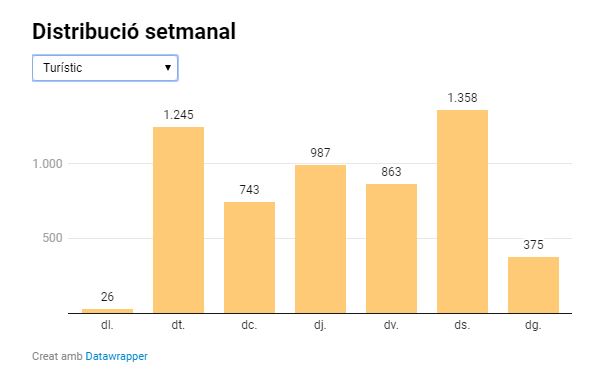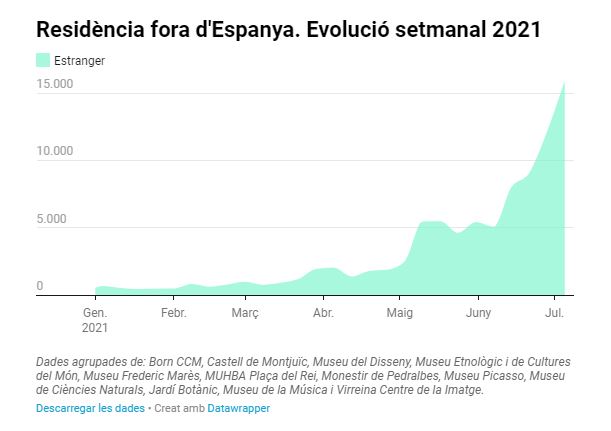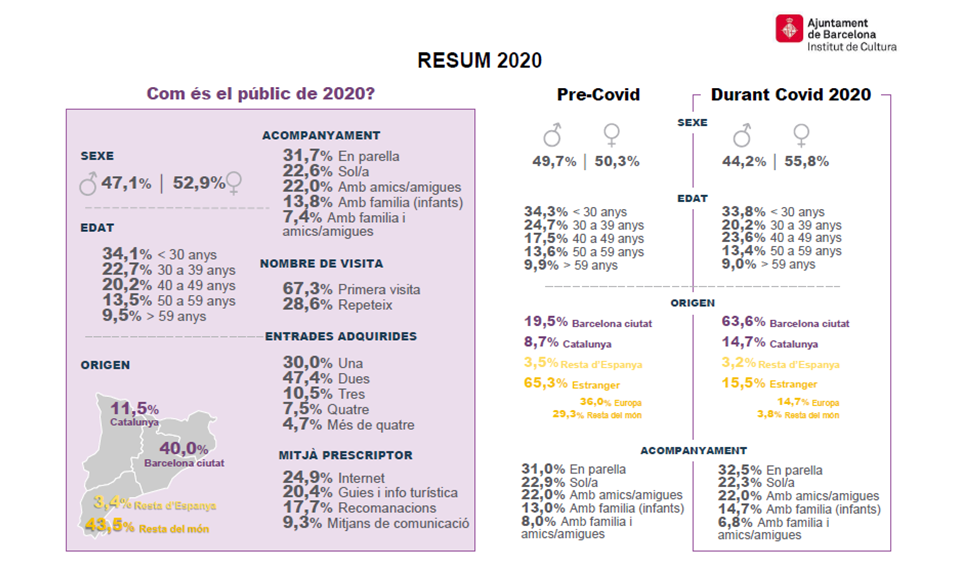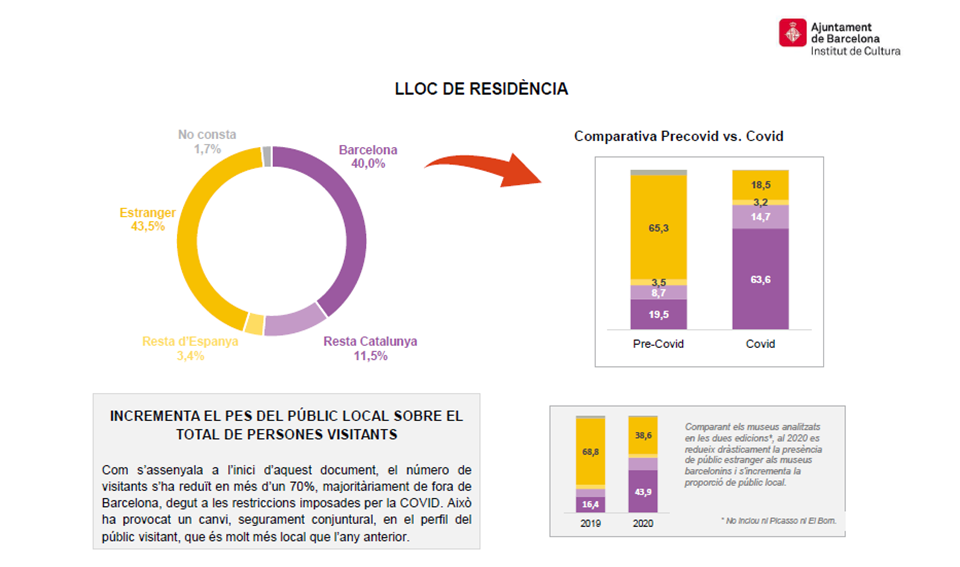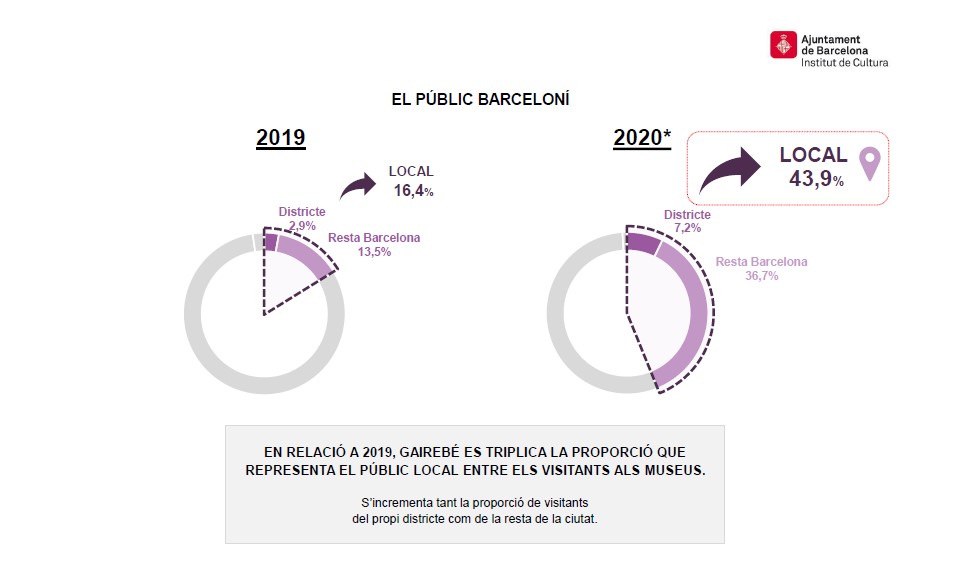The website of the Cultural Data Observatory has opened a new Covid-19 data section* in order to monitor the recovery of cultural activity in the city
* Only available in the Catalan version of this website
Museums were one of the first sectors to be analysed, but data was also compiled on the activity of local centres, such as libraries and civic centres, basic facilities for culture in the various areas of the city.
The Barcelona Social Pact was presented on Friday 4 June. As a preliminary phase of this project, a report was produced, featuring a diagnosis of the state of culture in the city (you can see the report at this link). However, the Covid-19 crisis marked a turning point for this diagnosis, and consequently, the various political forces taking part proposed that the work should continue, in order to systematically analyse the evolution of the situation. It is in this context that, in order to present all of this information, you will find a specific Covid-19 section on this website, making it possible to follow the effects of this health crisis on various sectors.
In recent months, the Cultural Data Observatory has been working on two lines: to determine which cultural-activity data could be monitored continually and to monitor it; and to be able to repeat some of the analysis that was initially carried out in the diagnosis, and examine its evolution in 2021.
Museums were one of the first sectors to be analysed. It is important to highlight that, for the first time, the visitors to a large number of centres have been monitored on a weekly basis, and this information has made it possible to monitor the sector’s evolution in real time.
An analysis that goes beyond the figures
The analysis of the museum sector, compiled in the indicators, includes data concerning origin: the number of foreign nationals who visit the museums. This is not only relevant data for the analysis of visitors but also an indirect indicator of the number of tourists arriving in our city.
Another data set refers to the activity of local centres: libraries and civic centres, which are basic facilities for culture in the city’s various areas. In this case, the data are monthly, but they make it possible to see how these centres maintained their efforts to remain in contact with people at all times.
Finally, the data from the new Citizen Culture Office (OCCU) express the change that occurred in the cultural information office in the middle of La Rambla, which is mostly dedicated to tourists. With the onset of the health crisis, it turned its attention to providing support for the cultural network and city residents interested in creating culture.






